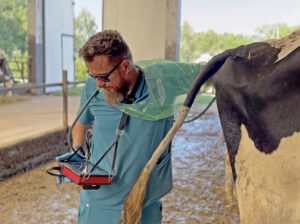Mastitis in Dairy Cows – How to Spot, Treat, and Prevent Udder Inflammation
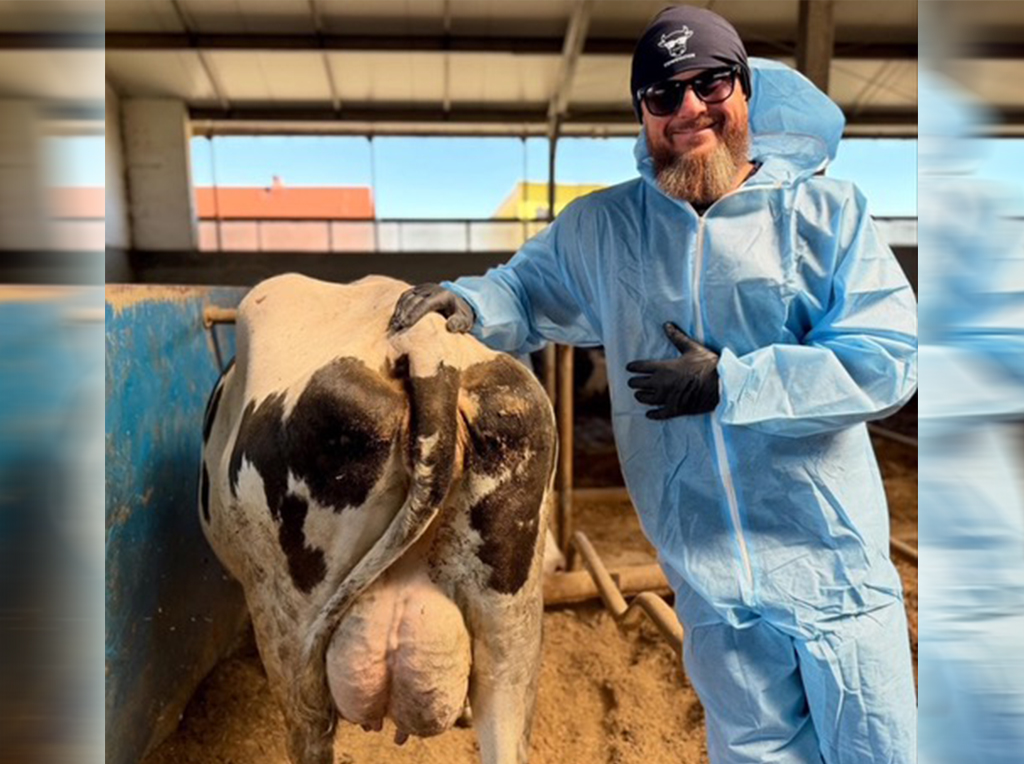
Mastitis, or udder inflammation, is one of the most common and costly health issues in dairy farming. It particularly affects high-yielding cows and can lead to serious financial and health-related losses. In this article, we’ll take a closer look at what mastitis is, how to recognize it, treat it effectively, and most importantly – how to prevent it.
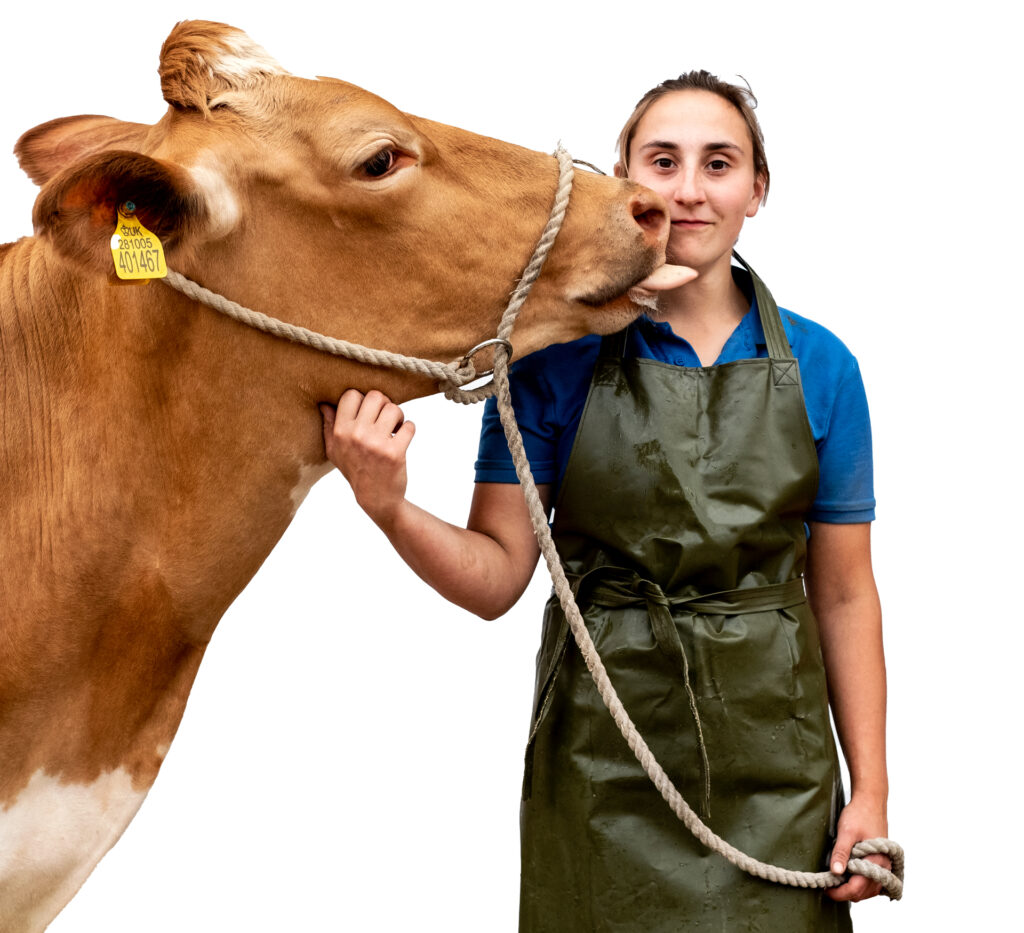
What Is Mastitis?
Mastitis is an inflammation of the mammary gland caused by infectious or environmental factors. Bacteria found in the barn, bedding, or soil can trigger the condition, as can those passed between animals through milking equipment or direct contact.
To make things more challenging, several types of pathogens often coexist within the same herd, which complicates treatment.
What Causes Mastitis?
1. Environmental Sources
Environmental Sources
These bacteria live in the cow’s surroundings, such as bedding or manure:
• Escherichia coli
• Streptococcus uberis
They typically enter the udder through the teat canal, especially when hygiene is lacking.
2. Contagious Sources
These bacteria spread from cow to cow:
• Streptococcus agalactiae
• Staphylococcus aureus
• Mycoplasma spp.
• Corynebacterium bovis
• and others
They are mainly transmitted via dirty hands, milking equipment, or even flies.
Recognizing Mastitis – What Are the Symptoms?
Mastitis can take two main forms:
a. Subclinical Mastitis
– No visible signs
– Usually detected by an increased somatic cell count (SCC) in milk
b. Clinical Mastitis
– Visible symptoms that vary in severity:
• Peracute: sudden onset, high fever, risk of shock
• Acute: swelling, redness, pain, abnormal milk
• Mild: less intense, lingering symptoms
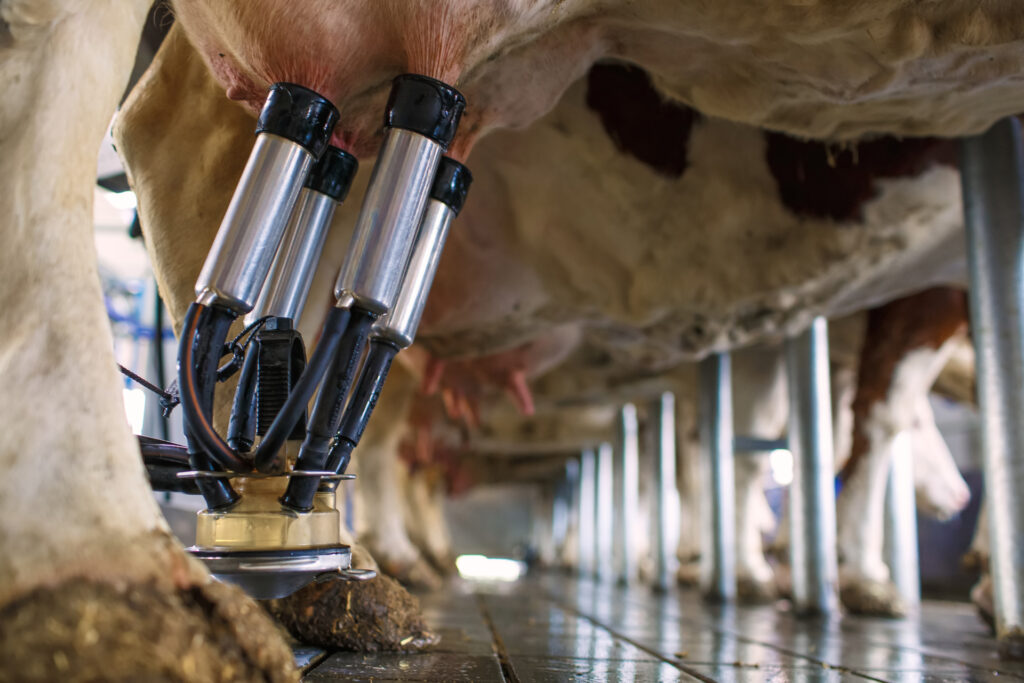
Signs to Watch For
• Swollen, red, or painful udder
• Milk with clots, cloudiness, or off-putting odor
• Fever, lethargy, reduced appetite
• High SCC levels in milk
Diagnosing Mastitis
Accurate diagnosis is essential for effective treatment. Common methods include:
• Physical examination of the udder
• On-farm tests like the California Mastitis Test (CMT)
• Milk cultures to identify the pathogen and test antibiotic sensitivity
• PCR testing from bulk milk samples
• Blood and milk tests to evaluate the overall inflammatory response
How Is Mastitis Treated?
Successful treatment usually requires a combination of methods:
• Anti-inflammatory drugs (NSAIDs) to reduce pain and swelling
• Antibiotics, selected based on culture results
• Fluids, especially in severe cases
• Topical treatments, such as soothing udder creams
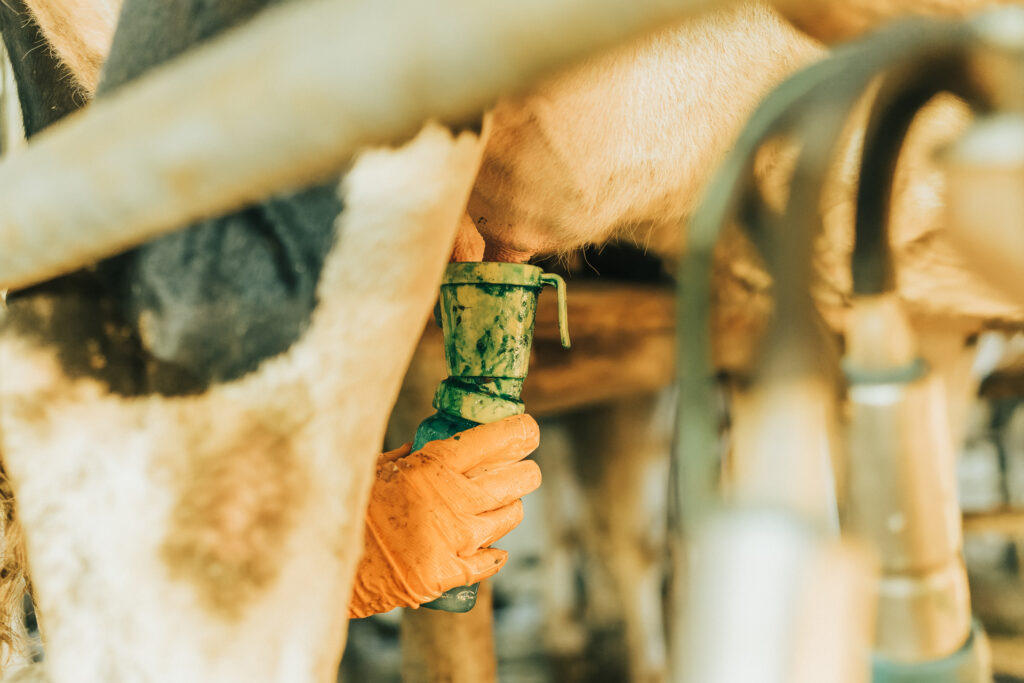
Prevention – Reducing the Risk of Mastitis
Preventing mastitis requires daily attention and consistency:
a. Hygiene
• Disinfect teats before and after milking
• Keep milking equipment clean
• Maintain a sanitary barn environment
b. Clean Living Conditions
• Provide dry, clean bedding
• Remove manure regularlya
c. Pest Control
• Flies can carry bacteria between animals
d. Nutrition
• A balanced diet with essential vitamins and minerals supports immune function
e. Monitoring
• Regular milk testing and SCC checks
• Early response to warning signs
f. Vaccination
• Vaccines are available for some pathogens and can help reduce outbreaks
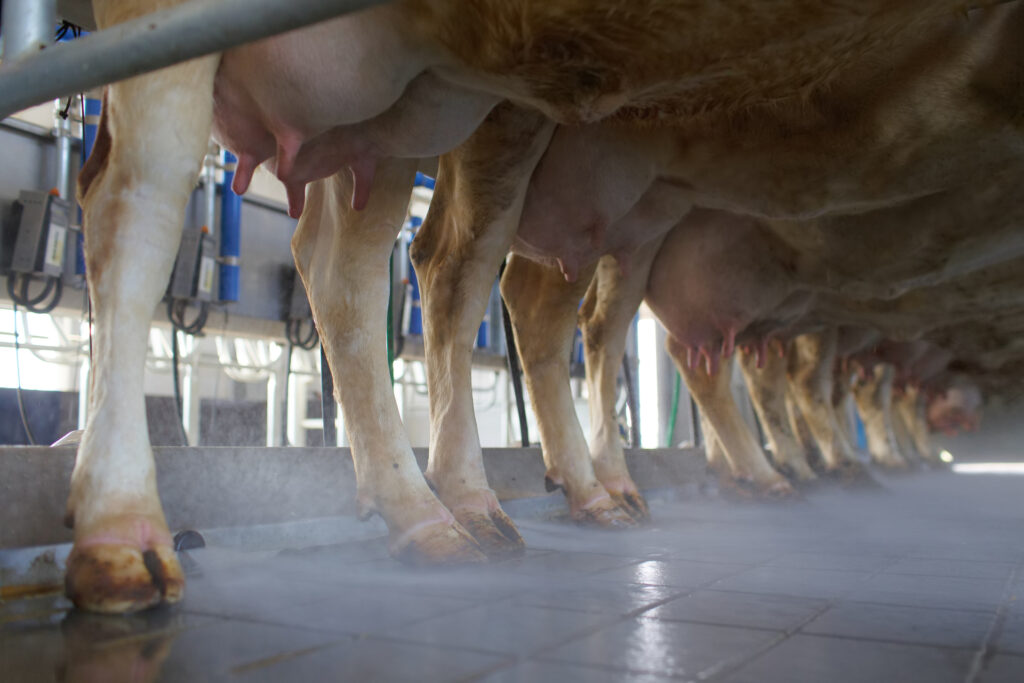
Final Thoughts – Staying Ahead of Mastitis
Mastitis is a serious challenge, but with the right strategy, it can be managed effectively. The best results come from a combination of good diagnostics, targeted treatment, and consistent prevention. Success depends on the teamwork of the farmer, veterinarian, and farm staff.
Protecting udder health isn’t just about economics – it’s about animal welfare. And a healthy, comfortable cow will always reward you with better milk and a calmer milking experience.
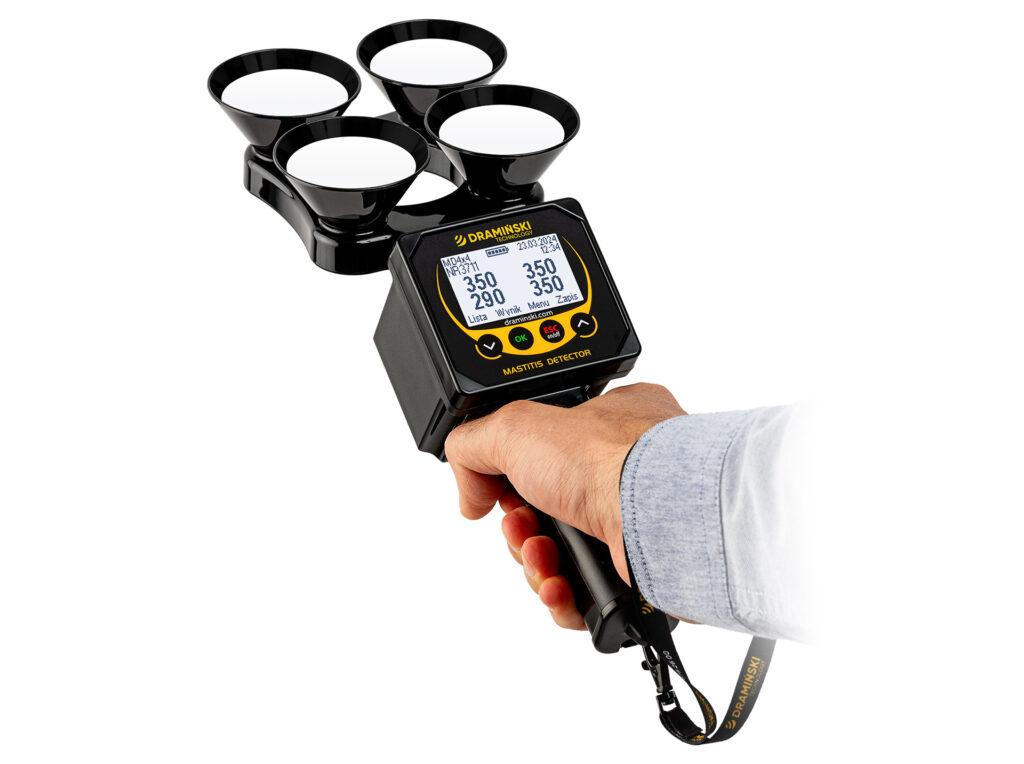
To effectively defeat mastitis, it is crucial to quickly detect the problem before visible symptoms appear. For this purpose, it is worth reaching for proven diagnostic tools, such as the DRAMIŃSKI MD4X4Q2 mastitis detector – a precise and easy-to-use device that allows for early diagnosis of inflammation of the udder and immediate reaction.
The DRAMIŃSKI MD4X4Q2 Mastitis Detector is a modern device designed for early detection of subclinical mastitis (mastitis subclinica) in cows, sheep and goats. By measuring the electrical resistance of milk, the device allows for the identification of inflammation even before visible symptoms appear, which allows for faster treatment and minimization of losses in milk production.
Main features:
• Precise diagnostics: It allows for simultaneous testing of milk from four quarters of the udder in cows or two in sheep and goats, indicating differences between them and identifying the most at-risk quarter.
• Easy to use: Simply milk the first streams of milk directly into the measuring cup, press the button, and the result will appear on the clear display.
• No reagents: The device does not require the use of any additional chemicals, which makes it safe and economical to use.
• Internal memory and application: Allows you to save up to 250 animal identifiers and 200,000 measurements with date and time, and a dedicated application allows you to analyze data and monitor treatment progress.
• Durability and ergonomics: Compact design, resistant to barn conditions, with easy access to the battery and the possibility of washing under running water.
Thanks to DRAMIŃSKI MD4X4Q2, farmers can effectively monitor udder health, prevent the development of diseases and ensure high quality of the milk produced..

DVM, Michał Barczykowski

